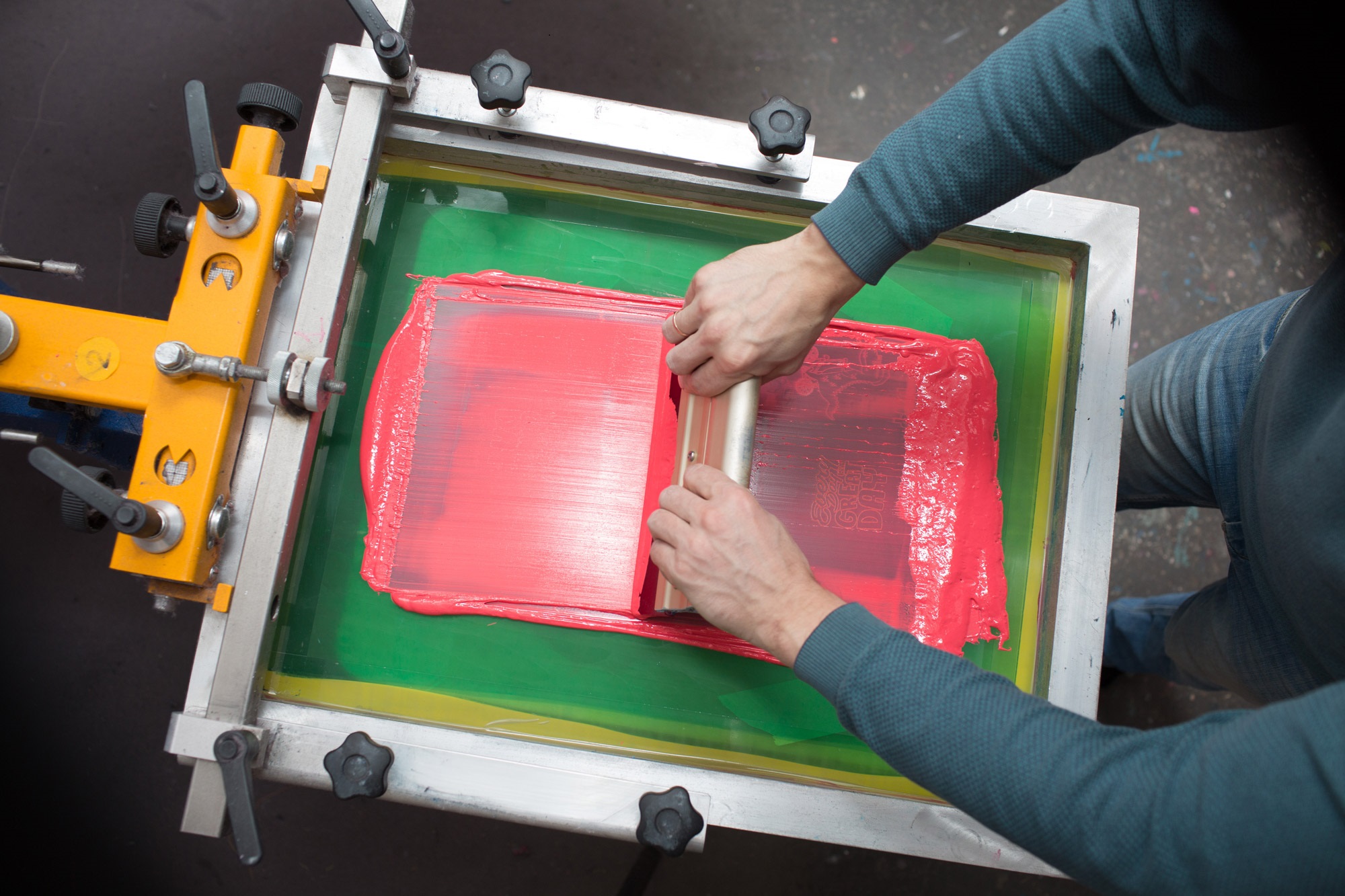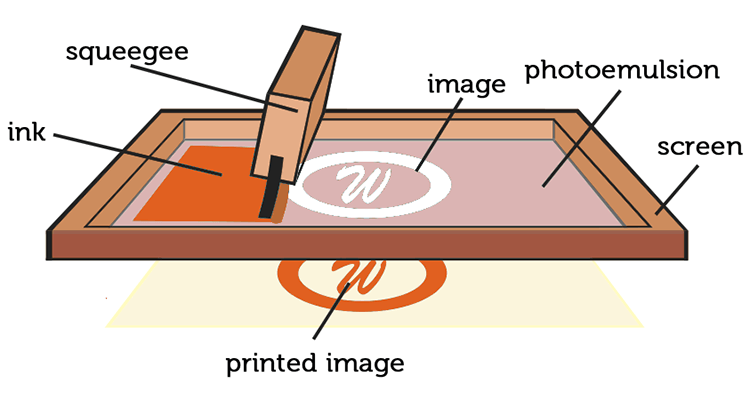Unknown Facts About Tx Tees
Unknown Facts About Tx Tees
Blog Article
Top Guidelines Of Tx Tees
Table of ContentsTx Tees - QuestionsGetting My Tx Tees To WorkThe smart Trick of Tx Tees That Nobody is DiscussingTx Tees Can Be Fun For EveryoneTx Tees Can Be Fun For EveryoneThe smart Trick of Tx Tees That Nobody is DiscussingTx Tees - An Overview
Include up other prices, like the number of utilities it takes to run the shop and the price of ink and emulsion per layout. Take the print below.The solution ought to only be a couple of cents considering that you 'd just require to layer one screen for this work. Typically, printers attempt to make up to 45% revenue on a print work.

With DTF, you can print a handful of t-shirts, or just one. Make use of the very same calculator as the section above to compute just how much revenue you 'd use DTF transfers. Contrast the expenses and profits to whichever approach talks finest to your setup and procedure. Both display printing and DTF have their specific niches in the world.
The Best Strategy To Use For Tx Tees
The most effective method to recognize? Ask around and see what print shops like your own are doing. custom t-shirt design. Try both out and see which you like much better
When you're picking what sort of printing method to utilize for publishing your art work layouts on your garments, it is very important that you understand the distinctions in between these 2 strategies so you can optimize outcomes while decreasing costs. Screen printing is the most typically utilized method for publishing styles on fabrics.
DTG printing is likewise recognized as place or straight to garment printing due to the fact that it publishes just what is required rather of making a display as display printers do. https://experiment.com/users/txtees02. Display printing works by display filler squeegee screen printing ink display mesh screen, after that transferring the photo to garment utilizing heat and/or stress
The DTG printer utilizes unique dye-sublimation inks that are applied right into a pre-designed picture by a digital printing system. The inks come to be part of the material, permitting vivid colors and exceptional information. It's also called spot or direct to garment printing due to the fact that it prints just what is needed rather than making a display as screen printers do.
Examine This Report on Tx Tees
First, it's much faster - you can publish a fullcolor photo in mins, as opposed to hours for screen printing. Second, there's no set up time or expenses included - you can publish any type of design you such as, without needing to create a screen first. Third, there's no waste - since screen printers screen print one style each time, they need to evaluate each shade independently.
The paper is very expensive and can only be used once. Once it's printed on, it needs to be disposed of. - The preliminary purchase price is lower than the upfront investment of DTG printers- You can publish multi-color layouts one display at once rather of having to print each color separately like DTG printing.

Unknown Facts About Tx Tees
Instead of making use of screen mesh as screen printers do, dye sublimation printers make use of laser technology to transfer your pictures onto garments or paper. A warmth process transfers the dye from its solid-state straight right into the gas phase which consequently merges it onto textile substrates when they are rapidly heated up to high temperature levels under high pressure.
Sublimation printing is environmentally friendly. It makes use of much less water than screenprinting, and because it doesn't involve the usage of damaging solvents, it's secure for all sorts of garments. The dye sublimation inks are also odor-free when healed, unlike display printers that use damaging chemicals throughout the display printing procedure that leave an undesirable smell.
They likewise save money on costly equipment like exposure systems considering that color sublimation printers do not need a UV direct exposure system or a flash remedy stove that is normally made use of in display printing (t-shirt printing). What is direct to garment printing (DTG Printing)? DTG printing is a digital screenprinting procedure that publishes straight onto material utilizing specialized inkjet printers
Getting The Tx Tees To Work
DTG printing supplies many advantages over standard screenprinting, including the capability to print photo high quality photos, higher color vibrancy, and the capacity to publish layouts on darker textiles. DTG printers function by heating up the textile ink till it becomes a gas. The gas after that permeates the textile, bonding with the fibers to produce a permanent print.

Display printers merely prepare their display after that begin printing up until they run out of product or ink.- There is a large range of skilled screen printers all over the globe, which can be helpful for beginners. - It's a slower procedure - display printers commonly need to wait on the ink to dry before they can publish the following color- Screen printers call for hand-operated labor, so there's a greater discovering curve and it takes longer to produce a top quality style- Display printing isn't as precise as DTG printing, so you may obtain some "blood loss" of shades from one part of the picture onto one more if not done correctly.
The smart Trick of Tx Tees That Nobody is Talking About
Rather of using display mesh as display printers do, dye sublimation printers use laser modern technology to transfer your photos onto garments or paper. A warm procedure transfers the color from its solid-state directly into the gas stage which in turn integrates it onto fabric substrates when they are swiftly heated up to high temperature levels under high pressure.
Sublimation printing is environmentally friendly. It uses less water than screenprinting, and due to the fact that it doesn't entail using damaging solvents, it's secure for all sorts of clothing. The color sublimation inks are also odor-free when healed, unlike screen printers that utilize damaging chemicals during the display printing procedure that leave an unpleasant odor.
They also save money on expensive tools like exposure systems because color sublimation printers do not require a UV exposure system or a flash remedy stove that is generally utilized in display printing. What is straight Find Out More to garment printing (DTG Printing)? DTG printing is an electronic screenprinting process that prints directly onto material making use of specialized inkjet printers.
3 Simple Techniques For Tx Tees
DTG printing supplies several advantages over typical screenprinting, consisting of the capability to print photographic quality images, greater shade vibrancy, and the capacity to publish styles on darker fabrics. DTG printers work by warming the fabric ink till it becomes a gas. The gas then penetrates the material, bonding with the fibers to produce a permanent print.
Report this page